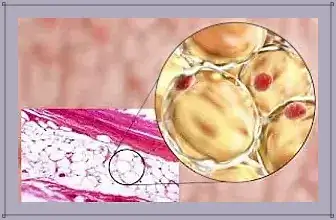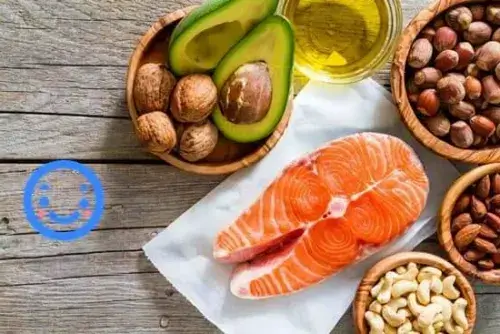Fats or lipids. The modern human diet necessarily includes fats, because they are the body’s energy sources. Fats are different and it is worth remembering! Let’s find out about this and I hope we will remember it for the day ahead.
Some fats that we use in our diet can improve brain function and strengthen the immune system, while others can cause the development of serious diseases.
How are fats different and where are the healthiest ones found? Why is it harmful to heat food and why is palm oil dangerous?
Fats or lipids, explanation.
Fats (or lipids) are divided into saturated and unsaturated. Saturated fats have a solid consistency and are mainly of animal origin.
 They are found in bacon, sausages, cheese, cream, milk, butter, as well as in some plant products – palm and coconut oils.
They are found in bacon, sausages, cheese, cream, milk, butter, as well as in some plant products – palm and coconut oils.
Unsaturated fats are obtained from plant materials: rapeseed, sunflower, flax, etc. They are called vegetable oils.
Trans fats are modified fatty acids.
They can be obtained naturally or artificially. In the first case, they are formed as a result of the vital activity of bacteria in the stomach of ruminants and remain in meat and dairy products in an amount of 5-8 percent.
Artificial trans fats are obtained by treating cheap vegetable oil with hydrogen using high-temperature technology and catalysts.
Many products contain expensive substitutes for milk fat, for example, margarine. It contains up to 40 percent trans fats.
The reason why they enter human food is the repeated heat treatment of food: during frying and baking at high temperatures, ordinary fats are converted into trans fatty acids.
The same process is observed when heating fatty foods in a microwave oven.
Fats or lipids, why are trans fatty acids harmful?
The danger lies in the fact that trans fatty acids are not eliminated from the body on their own, which means that they accumulate, gradually replacing natural lipids in organs and tissues.
As a result, the cells of the human body lose the ability to fully perform their functions and remove harmful substances.
Trans fatty acids weaken the absorption of vitamin D. Normal immunity is disrupted, as well as the functioning of the kidneys and thyroid gland.
If anything, these are not innocent warnings, because they can cause rickets.
In addition, they disrupt the detoxification processes of the liver and make platelets more sticky, which increases the risk of blood clots.
In addition, trans fatty acids reduce the amount of high-density lipoproteins (“good” cholesterol) and at the same time increase the content of low-density lipoproteins (“bad” cholesterol).
This contributes to the development of atherosclerosis, strokes and coronary heart disease (the most common causes of human death). Trans fatty acids block digestive enzymes, making food practically indigestible.
Fats or lipids, studies.
The study found that trans fatty acids can affect women’s breast health. Evaluating the results, the researchers concluded that their excessive consumption increases the risk of developing breast cancer by 40 percent.
People who consume a lot of trans fatty acids have reduced sensitivity to insulin.
The full mechanism of their action on insulin metabolism has not yet been sufficiently studied, but it can already be concluded that trans fats increase the risk of developing diabetes.
Due to their low cost and ease of use, trans fatty acids are widely used industrially.
If anything, confectionery products are prepared using culinary fats. Margarines are used to improve the taste of food products and extend their shelf life.
The amount of trans fatty acids in a healthy person’s diet should not exceed one percent – this can avoid negative health effects.
Therefore, it is necessary to pay attention to the composition of products and exclude products with an unfavorable composition.
Fats or lipids, why should you limit your palm oil consumption?
Palm oil (unlike most vegetable oils) contains a significant amount of saturated fatty acids – almost 50 percent. It has a solid consistency and is suitable for the industrial production of bread and confectionery.
You should know that palm oil, like animal fats, increases blood cholesterol levels and increases the risk of developing cardiovascular diseases.
Fats or lipids, how to balance your diet?
Fats are an indispensable source of energy for humans, they are part of every cell and nerve tissue, and the brain contains the largest amount of lipids.
Therefore, it is impossible to completely abandon the consumption of fats.
The most fully digestible fatty product should contain approximately equal proportions of animal and vegetable fats.
Moreover, with an optimal ratio of omega-3 and omega-6 fatty acids, of course, there should be no trans fatty acids.
The usual diet is characterized by a high consumption of animal fats, such as dairy products, butter and sausages.
“Bad” fats can be replaced with “good” ones with the help of nuts, which contain a record amount of unsaturated fatty acids and also serve as a source of vegetable protein.
Regular consumption of nuts has a positive effect on the level of lipids in the blood serum, reduces the risk of stroke, improves mental and cardiac function, strengthens the immune system.
In addition, nuts contain a high content of tocopherol and vitamin E – antioxidants that protect products from oxidative damage.
It is also considered a good tradition to consume foods rich in omega-3 fatty acids: fish (sardines, anchovies, herring, etc.), seafood (roast fish, squid), mustard, camelina and rapeseed oils, spinach, avocados.
Omega-6, another group of polyunsaturated fatty acids, is found in sunflower and linseed oil, lard, poultry meat, walnuts and peanuts.
In the diet of a healthy person, omega-6 should be significantly more than omega-3, about 10 times.
 However, to ensure a balanced intake of these fatty acids, a healthy diet is necessary. Experts also recommend adding sea buckthorn fruit oil to the diet.
However, to ensure a balanced intake of these fatty acids, a healthy diet is necessary. Experts also recommend adding sea buckthorn fruit oil to the diet.
In the human body, proteins, fats and carbohydrates can be converted into each other.
Therefore, your body begins to spend the fat previously stored in the body on the synthesis of amino acids and protein molecules.
Fats are necessary for the human body, but excessive consumption of harmful lipids can lead to health deterioration: trans fatty acids can weaken the immune system, provoke the development of cardiovascular diseases and diabetes.
To avoid this, you should regularly consume nuts, fish and dairy products.



